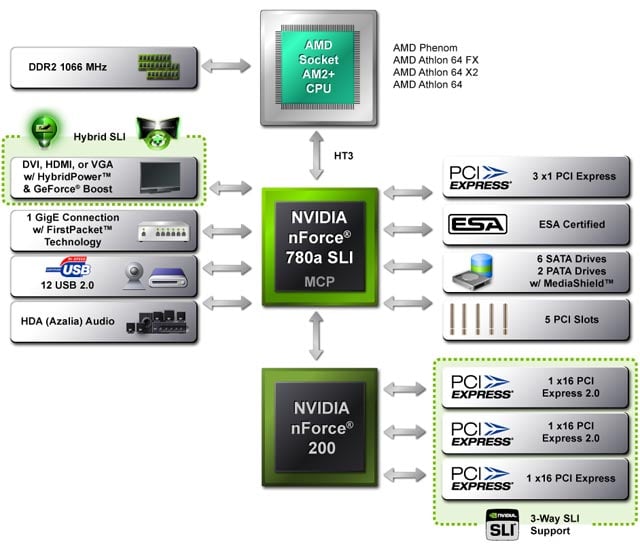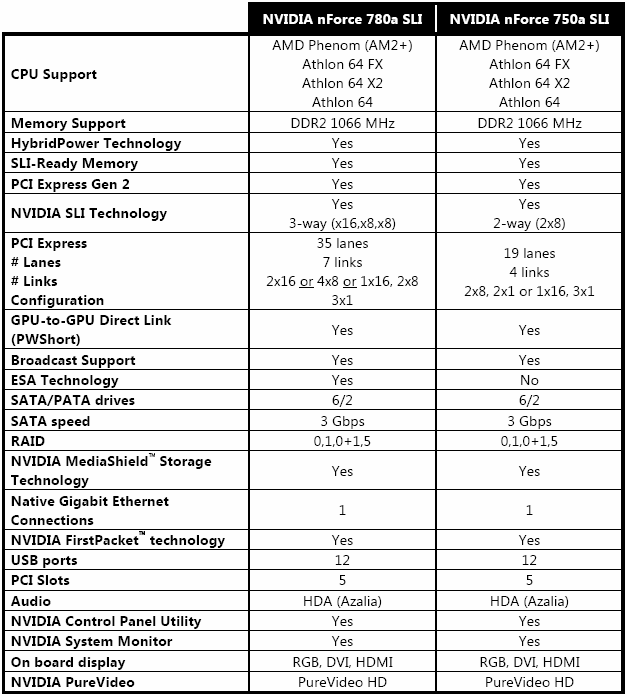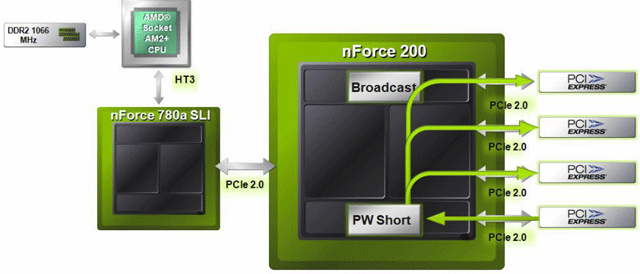Introduction and Features

It is hard to believe that it has been almost two full years since NVIDIA released a new flagship chipset for the AMD platform. Since the nForce 590i SLI's official release in May of 2006, NVIDIA has introduced a handful of mid-range and more affordable chipsets for the AMD-platform, but the 590i SLI was it at the high-end, despite AMD's release of their quad-core Phenom processors and competing 7-series chipsets.
Early this year while out at CES, we told you about NVIDIA's plans to mix things up at the high-end of their AMD chipset line-up with the IGP-equipped nForce 780a SLI, but it has taken quite a bit of time to bring that to market. Today, we present to you three nForce 780a SLI-based motherboards (two from Asus and one from MSI), that are sure to pique the interest of all of the AMD fans out there and maybe a few mainstream system builders as well. For the first time since the Phenom launch, AMD fans will now be able to pair up NVIDIA's flagship graphics configurations with an AMD CPU and exploit all of the features inherent to both.
Today isn't just about the nForce 780a SLI, however, as NVIDIA is also disclosing more details regarding other members of the nForce 700a family as well.

nForce 780a SLI with Dual GeForce 9800 GX2s
As we've already mentioned, the flagship model in the nForce 700a series of chipsets is the 780a SLI. We've got a high-level overview of the chipset below and then we'll talk a bit about the nForce 750a SLI as well.

As you can see in this high-level block diagram, the nForce 780a SLI uses NVIDIA's NF200 chip for 32 lanes of PCI Express Gen 2 and 3-way SLI support. The MCP also features an additional three lanes of PCI Express Gen 1 connectivity, a single GigeE network controller, 12 USB 2.0 ports, Azalia HD audio, up to five PCI slots, Media Shield storage technology and ESA (Enthusiast System Architecture) support.
The 780a SLI features two video outputs (one digital, one analog) and an mGPU with similar functionality to a GeForce 8400 series discreet graphics card. This mGPU is Windows Vista Premium certified and DX10 capable. It also features NVIDIA's PureVideo HD engine for full CPU offload of all HD video codecs, but it has only a single-link DVI output that supports a max resolution of only 1920x1200. We should also point out that the 700a series of MCPs (its northbridge), will be manufactured at 65nm, and are mostly single-chip designs.

In terms of features, the nForce 780a SLI and nForce 750a SLI don't differ very much. Basically, the only differences between the two chipsets are in their total number of PCI Express lanes / links and support for ESA. This means the nForce 750a only two-way SLI, which is plenty for the vast majority of users, but other than that the two chipsets are quite similar.
As we've noted in previous articles, NVIDIA is utilizing their NF200 chip to bring PCI Express 2.0 support to a few of their high-end chipsets. In addition to offering 32 PCI Express lanes, however, the NF200 chip also features some proprietary NVIDIA technologies dubbed PW Short and Broadcast.

Broadcast
PW Short
Essentially, what NVIDIA has done with the NF200 is build-in a couple of "fast paths" inside the switch device, dedicated and tuned to optimizing mulit-GPU SLI transaction performance, both back to the root CPU complex and peer-to-peer between GPUs
Broadcast Mode and PW Short:
Specifically, there are two functional blocks as you'll note in the above diagrams, denoted as "Broadcast" and "PW Short". The Broadcast block provides a broadcast send mode for root complex transactions down to all GPUs in the system. This allows efficient transfer of data in one group transaction. PWShort, (which stands for Posted Write Short), is a dedicated "cut-through" mode for peer-to-peer communications between the GPUs, without the need to tap on upstream bandwidth to the CPU complex. What this means is that given the right workload, Broadcast and PWShort allow for faster, more efficient data transfers too and from the GPUs, with much less contention across the switch.






